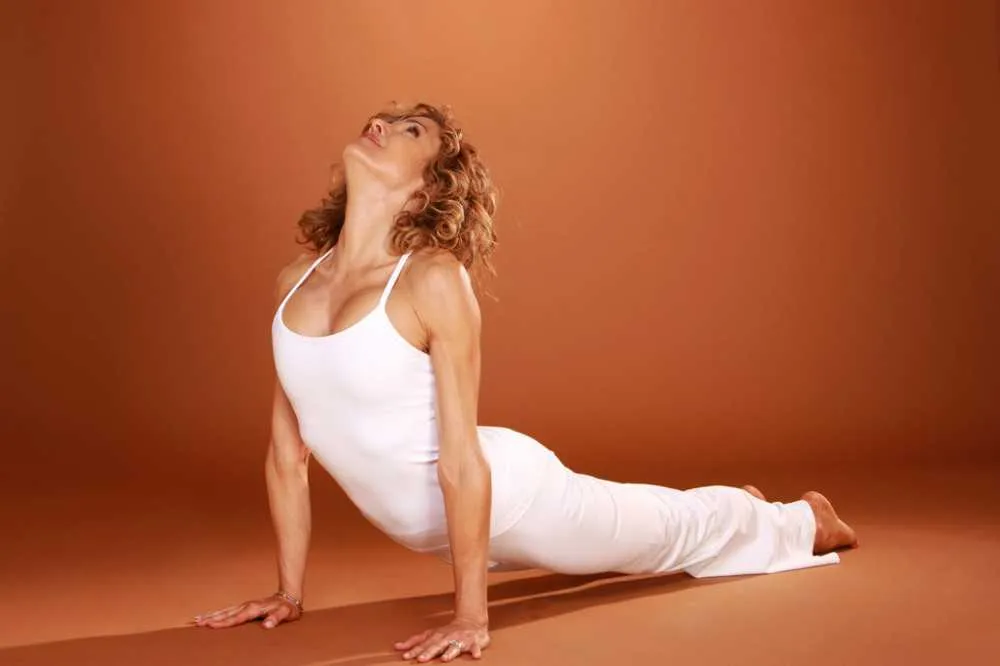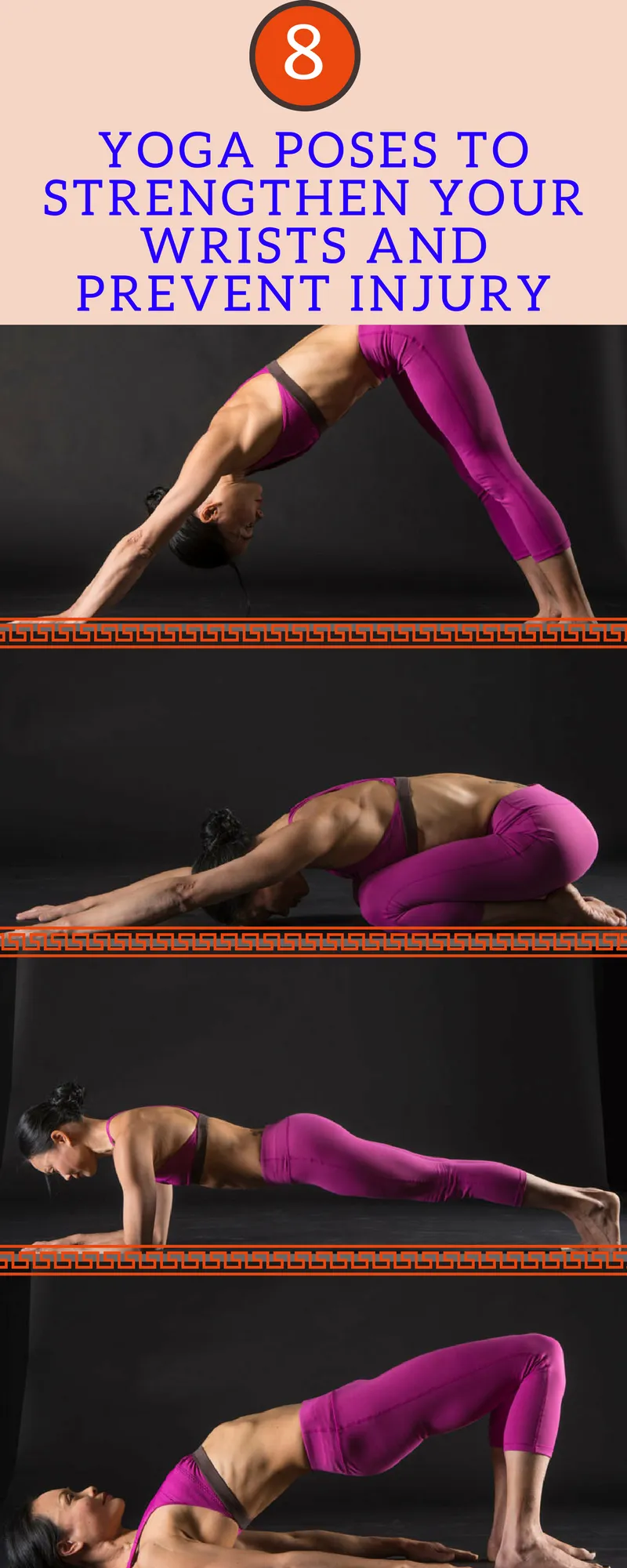When you do Vinyasa, your wrist has to bear weight, and without adequate support, injury may happen.
The most important thing for protecting your wrist is a strong core. A strong core is essential to improve the efficiency of rotator cuff muscles, which stabilize the shoulder and hence decrease the load transferred to your wrists. On the other hand, reduced core strength or inability to engage the core in Chaturanga Dandasana like asanas can cause decrease in the stability of trunk and the shoulders. In the evidence of weak core, strong shear forces are conveyed across the wrist during transition between poses. For example, every time you do Down Dog-Chaturanga-Up Dog-Down Dog sequence, your wrist has to bear weight. If you continue this practice without proper support, then it can lead to injuries.
Recommended Post – Yoga practice by using props
Practice these eight poses to strengthen your wrist and prevent injury:
Strengthen your core with happy baby pose, variations – Ananda Balasana
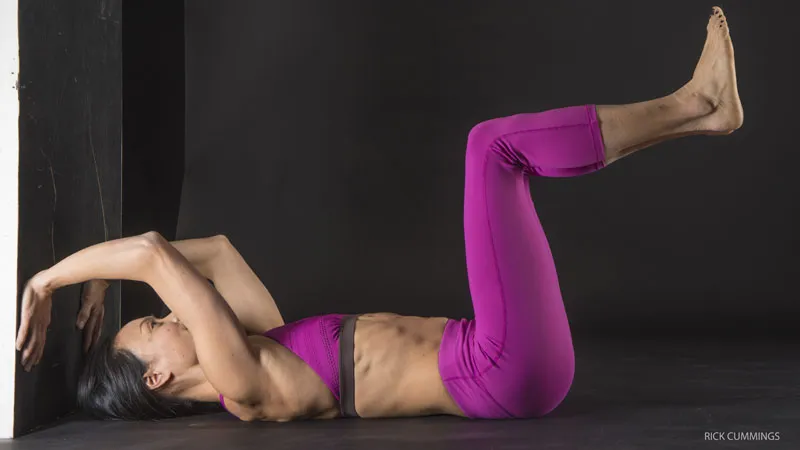
Lie on your back keeping your head at a distance of one foot from the wall. Keep your feet toward the centre of the room. Then raise your arms overhead and keep your elbows bent while placing your palms against the wall. Keep the fingers pointing down. Bend your hips and knees in tabletop positions making 90 degrees angle. Exhale and then straighten your right knee using your abdominals, and lower your right foot toward the floor. Then repeat this step with your left leg. Practice at least 10 rounds for maximum benefits.
Strengthening core with bridge pose, variation – Setu Bandha Sarvangasana, variation
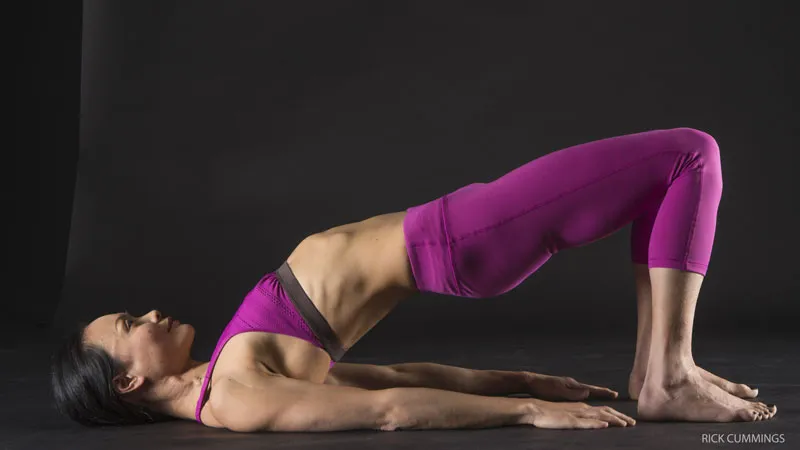
Regular practice can strengthen your gluteal muscles while energizing your core. This is a gentle backbend that you should practice daily. Lay on your back while keeping your feet slightly wider than your hips and at a distance of around 4-6 inches from your butts. Keep your palms down and let your arms rest on the floor. Gently try to drag your feet apart without any movement. Let your knees be just over the heels and keep pressure on gluteus maximus. Exhale and raise your hips while keeping the pressure on your feet. Inhale, and then lower your hips and back to the floor. Initially, practice 2-3 sets of 10 repetitions and then reach up to 20 repetitions in each set. Relax your body in between sets.
Strengthen your core with forearm plank

Forearm plank helps to strengthen your abdominal core. Lie flat keeping your forearms on the floor, and place your elbows under your shoulders. Uplift your whole body in a way that it makes a straight line from your head to heels. Try to pull your forearms toward your feet without making any movement, but keeping gluteus maximize engaged to move your tailbone in the direction of your heels. Keep breathing at your resting pace and hold for around 10 seconds. Return to normal while exhaling, and repeat it 2 to 3 times.
Activate rotator cuffs with eagle pose arms – Garudasana Arms
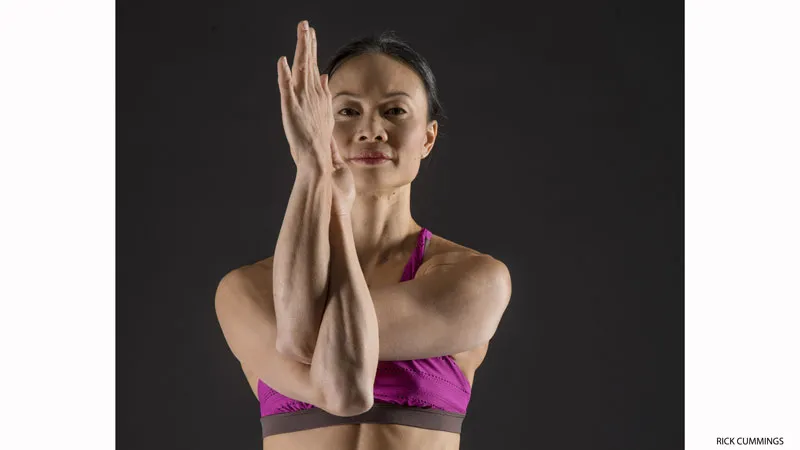
Regular practice of this pose can increase the strength and flexibility of your rotator cuffs. It uses eccentric contractions to increase the tension gently with the lengthening of muscles.
You can be seated or stand and cross your right arm under your left one in a way that your forearms are wrapped around each other. Raise your elbow slowly and take it to the shoulder height. Enhance stretch by drawing your left arm toward the right side. Press your left elbow gently to the right putting less than 20 percent of your efforts. Hold this position for around 8 to 10 seconds. Bring your elbow back to shoulder height and return your arms back to centre again holding this pose for another 20 seconds. Repeat the same with the other side and practice 3 rounds.
Take experts advice if you have an injury.
Activate your rotator cuffs with cow-face pose arms – Gomukhasana arms
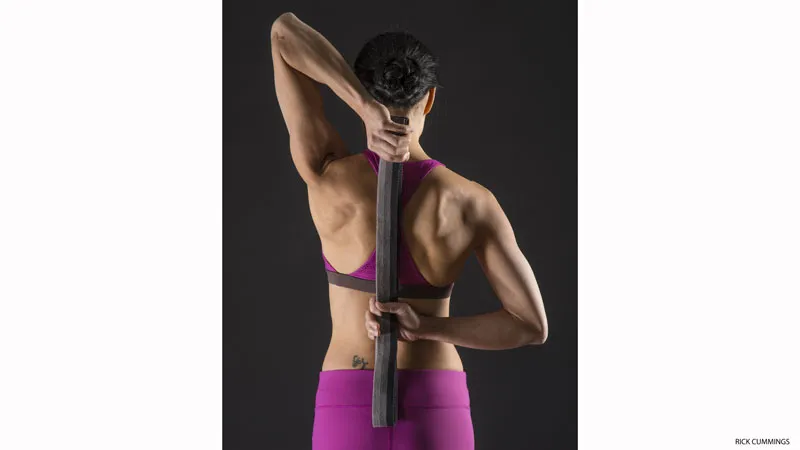
It can be done in two parts:
Part 1: Take your right arm up and bend your elbow pointing your fingers down your back. Take your left arm behind your back keeping the fingertips pointing up. Make use of a belt between your hands to bridge the gap. Stay focused on one arm at a time. With less than 20 percent of your efforts press the knuckles of right hand into your back. Maintain this pose for 8 to 10 seconds. Then pull the belt down with the left hand in order to create stretch in the right shoulder and hold for around 30 seconds. Switch sides and repeat the asana with left elbow keeping up.
Part 2: Switch the arms again keeping the right elbow on top, but keep focus on your left arm. Now pull the belt with the right hand creating a pressure on your left hand as it goes up. Draw the left shoulder back and down when you reach a comfortable stretch. With gentle pressure, push the knuckles of the left hand into the back and hold for 8 to 10 seconds. Then using the belt, draw the hand a little farther up the back. Maintain the position for 30 seconds and switch side.
Repeat three rounds of both the parts.
Activate your rotator cuff with warrior II Pose – Virabhadrasana II
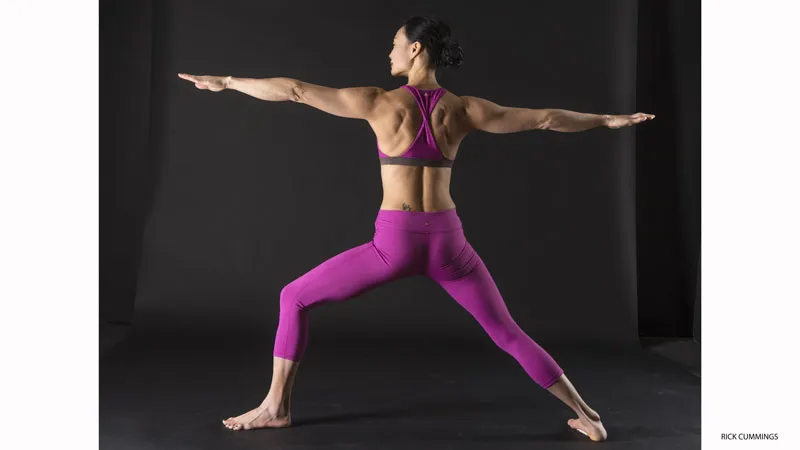
This pose brings stability in your shoulders.
From mountain pose or tadasana, take feet about three to four feet apart. Take your right foot out 90 degrees and keep another foot in parallel with the mat. Turn the left toes in slightly and align the right heel with left arch, and turn the right thigh out. Bend the right knee in order to bring it over the right ankle. Press using outer left heel and left leg. Then raise your arms to shoulder height with your palms up. Keep the fingers extended and draw the shoulder blades down the back toward the midline. Flip the palms down after rolling the shoulders back. Hold the position for about a minute and then switch the sides.
Stabilize your wrists – Child’s pose
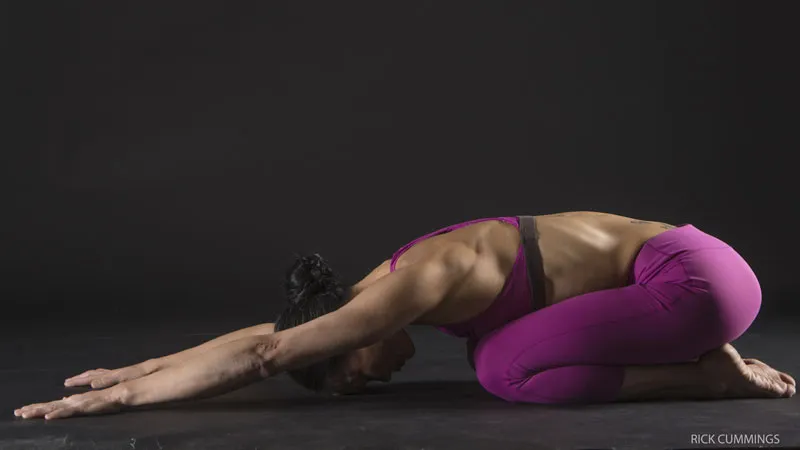
This pose connects your rotator cuffs with your wrists and strengthens it.
Form the child’s pose while keeping your knees together or hip-width apart. Let your sitting bones rest on your heels while extending your arms on the floor in forward direction. Keep the palms down. Compress your shoulders and pull your shoulder blades down your back keeping your rotator cuffs engaged. Do not deviate your wrists, but keep it straight. Press the base of your fingers into the mat and note a slight lift in your wrists. Doing so aligns your carpal bones with radius and ulna. Maintain the lift while you exhale and relax when you inhale. Use your fingertips and thumbs to add gentle pressure and slight gripping action. Direct your thumb toward the little finger to stabilize the wrist. Hold this pose for five breaths, then inhale and sit up. Stretch your right wrist into extension and hold your palm up. Use your other hand to gently pull your fingers back toward the wrist. Keep this pose for around 30 seconds, and then stretch the left wrist for the same duration.
Integrate all actions in downward-facing dog pose – Adho Mukha Svanasana

Releasing from the child’s pose, press the mounds at the base of your fingers onto the floor. Stabilize and slightly lift your wrists while rolling your shoulders out. Pull the shoulder blades down your back, inhale and lift your hips. Exhale and press your heels toward the floor. Draw your belly toward your spine and feel the engagement of abdominal muscles. Straighten your knees by contracting your quadriceps. Now, try to lift the tops of your feet toward your shins and pull your body back toward the heels to stabilize the core.
This post is originally inspired and images are taken from YJ

